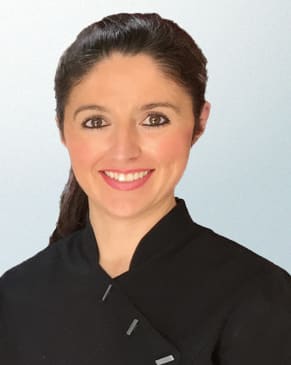Dental Hygienist Glasgow
Do you have bleeding gums?
Do you have inflamed gums around fillings or crowns?
Do you have tartar, staining or plaque around your teeth?
If you have problems like these you probably need a scale and polish and you certainly need to see our dental hygienist.
Meet Our Hygienist
Laura Herdman is the dental hygienist at Appletree Dental Care.
Laura has worked in many dental practices in Glasgow over the last few years and is registered with the General Dental Council.
She is dedicated towards preventing dental problems such as gingivitis and dental caries.
Laura is qualified in taking digital x-rays, dental impressions, administering local anaesthetics as well as performing complex periodontal work.

A free dental hygiene appointment with Laura is often included with one of our cosmetic dentistry treatments. For example one of the last stages of a braces treatment such as Six Month Smiles would involve a visit to the hygienist.
Bleeding Gums, Gum Disease and Dental Hygiene
Gum disease is something that troubles a lot of people these days. We are all keeping our teeth for longer and therefore it often affects the elderly population. As long as you see you dentist regularly so he can assess the health of your teeth and visit the hygienist, you will find that your gums will stay healthy.
How often do you need to see the hygienist?
Patients generally speaking will need that every few months or maybe every six months.
She will also give you instruction on how to clean your teeth, what mouth washes and toothpaste to use and her advice should be sought at least once or twice a year as a minimum.
Keeping Your Teeth Healthy
Do you ever wonder which of the many toothpastes and mouthwashes you should use? There is certainly a wide and colourful selection? Does mouthwash even work? And what about these cartoon-inspired kids’ toothpastes. Are they as effective as regular toothpaste? And what about those of us with sensitive teeth?
When you visit our dental hygienist she will be able to answer all of these questions and more. She will help you work out the best, most effective way to brush your teeth and keep your mouth fresh.
She will also scale and polish your teeth to remove buildup of plaque and removing tartar, leaving your teeth in great condition for the smiles ahead.
Dental Hygiene Explained
What are dental caries?
This is another was of saying tooth decay or dental decay. Best detected and dealt with early before it causes cavities, disease or even tooth loss.
What is gingivitis?
Gingivitis is the stage of gum disease when your gums bleed when you brush your teeth. You probably also suffer bad breath.
What is periodontitis?
Periodontitis is the next stage of gum disease where bacteria has spread below the gum line and will start to destroy the bone and tissue surrounding the tooth.
What is the best way to brush your teeth?
This is important because people can go for years using an ineffective technique. If you make an appointment our hygienist will demonstrate the best method for brushing your teeth. Key things you can practice are:
- Don't rush the process. A sensible - and recommended - two minutes can seem longer to impatient brushers!
- Angle your toothbrush against the gum line when you brush your front teeth
- Use smaller circular movements against every tooth, top and sides
- Tilt the toothbrush and use the edge to clean the insides of your teeth
- Don't brush too hard. Some electric toothbrushes will stop working when they sense undue pressure
- Avoid rinsing your mouth because the toothpaste that's left with continue to protect your teeth
- Spit rather than rinse
- Leave it at least 30 minutes before you eat anything again after you have brushed your teeth
- Replace your toothbrush at least every two or three months
What is the best way to floss your teeth?
We all know we should floss at least once a day, but not everyone knows the right way to do it. Use this step-by-step guide to find out how to properly floss your teeth:
- Break off about 18 inches of floss and wind most of it around one of your middle fingers
- Wind the remaining floss around the same finger of the opposite hand. This finger will take up the floss as it becomes dirty
- Hold the floss tightly between your thumbs and forefingers
- Guide the floss between your teeth using a gentle rubbing motion. Never snap the floss into the gums
- When the floss reaches the gum line, curve it into a C shape against one tooth. Gently slide it into the space between the gum and the tooth
- Hold the floss tightly against the tooth. Gently rub the side of the tooth, moving the floss away from the gum with up and down motions
- Repeat this method on the rest of your teeth. Don’t forget the back side of your last tooth.
- Once you’re finished, throw the floss away. A used piece of floss won’t be as effective and could leave bacteria behind in your mouth
If the floss is particularly smelly after you have used it, this is usually a sign you need to make an appointment with your dentist or hygienist.